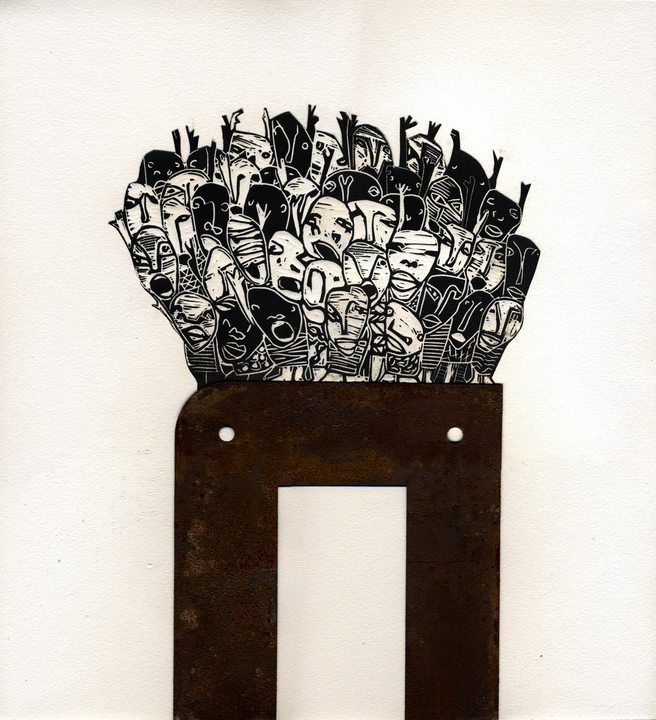Exhibitions
Index / Activities / Exhibitions / “On the Other Side,” an exhibition by Moisés Yagües
“On the Other Side,” an exhibition by Moisés Yagües
From July 14, 2016 until October 15, 2016July 14-September 15, 2016 Monday-Friday from 11:00 a.m.-2:30 p.m. September 16-October 14, 2016: Monday through Friday, from 11:00 a.m.-6:30 p.m. August: closed on weekends and holidays.
CóRDOBA
Casa Árabe exhibition halls (at Calle Samuel de los Santos Gener, 9)
July 14-September 15, 2016 Monday-Friday from 11:00 a.m.-2:30 p.m. September 16-October 14, 2016: Monday through Friday, from 11:00 a.m.-6:30 p.m. August: closed on weekends and holidays.
Casa Árabe is presenting the exhibition “Al otro lado” (“On the Other Side”), in which artist Moisés Yagües uses the technique of woodcut printing to deal with the social reality of borders and migratory problems.
For the occasion, Piratas de Alejandría will be helping us celebrate the official opening of the exhibition with an activity titled Stories from the Other Side, a closer look at migrants and refugees based on images by the artist Moisés Yagües.
“On the Other Side” is a work with a natural, unproduced, casual feel that deals with the social reality of borders and migratory problems. By playing with humor and irony, “On the Other Side” forces us to experience a reality marked by the greatest movement of human masses in history, and by being one of the darkest eras in mankind’s history. It is an era in which borders are closed, people are deported and refugees are stockpiled in internment camps, in which the devastating effects of globalization and wars have done nothing but encourage these flows of people.
A world full of borders, of imaginary lines that become barriers to cross, even though this is something dangerous and “vital.” The everyday events in different places around the world; the horrific Syrian, Afghan and Iraqi exodus; the fences in Ceuta, Melilla, Hungary, Serbia and Cyprus...; the walls along the southern border of the United States and the tunnels in Mexico, Israel and the occupied Palestinian Territories; the boat people coming on cayucos, pateras and other vessels adrift in Lampedusa; the refugee camps in Calais, abandonment in Lesbos and containers filled with human beings in the United Kingdom; all of these images and many more give us a kaleidoscoplc portrayal of a world in painful movement. A world in which the Mediterranean arises like a great border where the souls attempting to reach Europe are drowned. However, it is not the only such obstacle, because this also occurs in Mexico with the Latin Americans who attempt to cross into the United States, and at other less visible latitudes. As we can see, millions of people are willing to die at sea or in the desert in order to “reach the other side.”
Within this context, Moisés Yagües (Molina de Segura, Murcia, 1972) (www.moisesyagues.com) uses woodcut printing in an attempt to recover the documentary nature of printing work, which gradually decreased in importance throughout the second half of the twentieth century.
The project, inspired by an eloquent text in a novel by Manuel Rivas titled El lápiz del carpintero (The Carpent’s Pencil), deals with this raw social reality. Thus, in the aforementioned novel, one of the characters (Dr. Da Barca) says, “The only good thing about borders are the clandestine crossings. It is tremendous what can be done by an imaginary line drawn one day by a senile king in his bed or sketched at a desk by the powerful as if they were playing a game of poker.”
Casa Árabe
The platform “Córdoba Ciudad Refugio”

